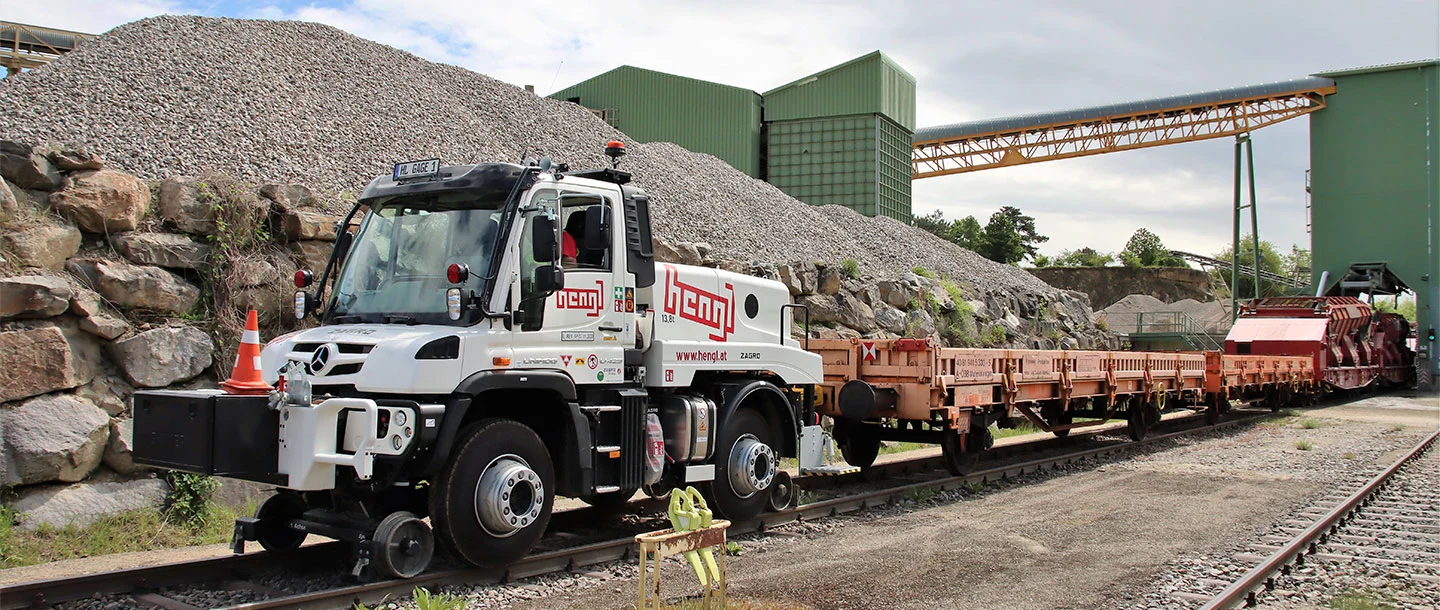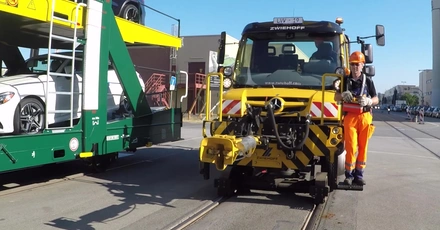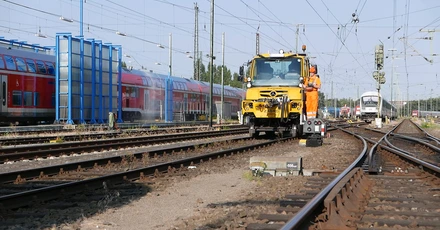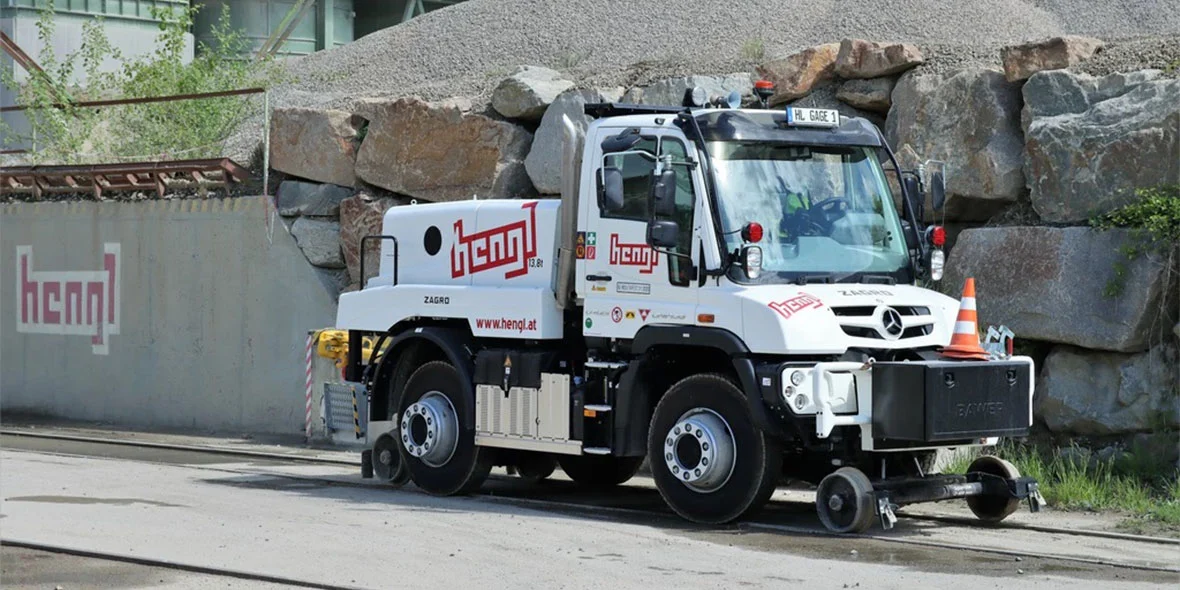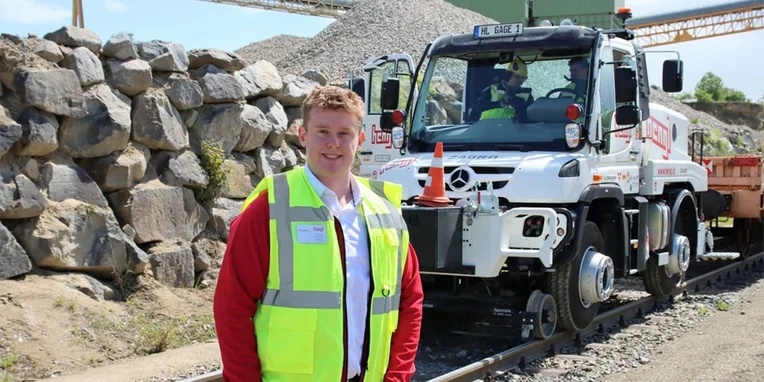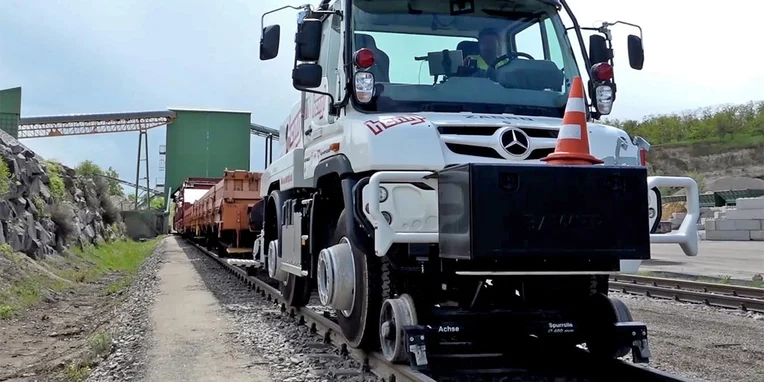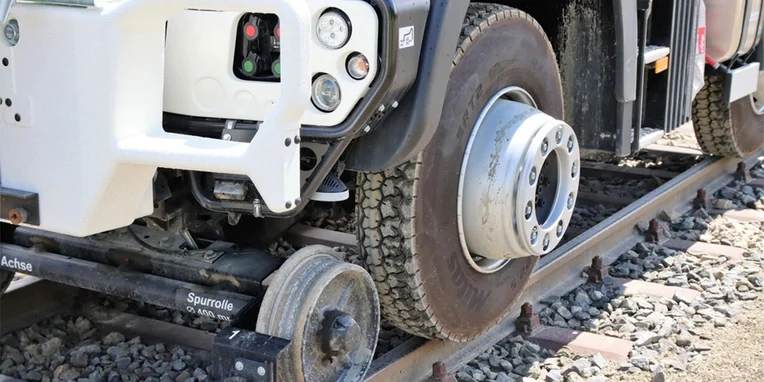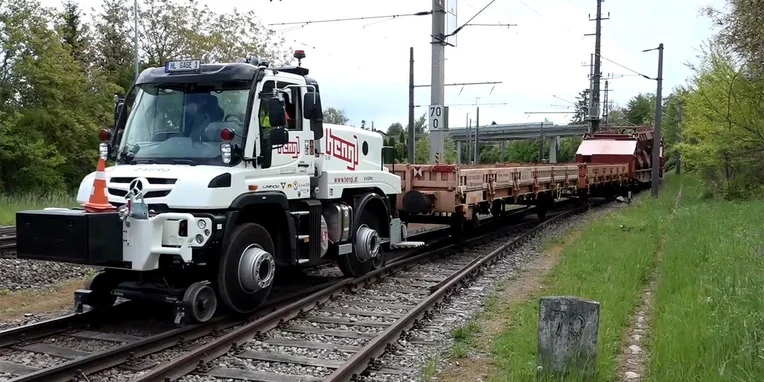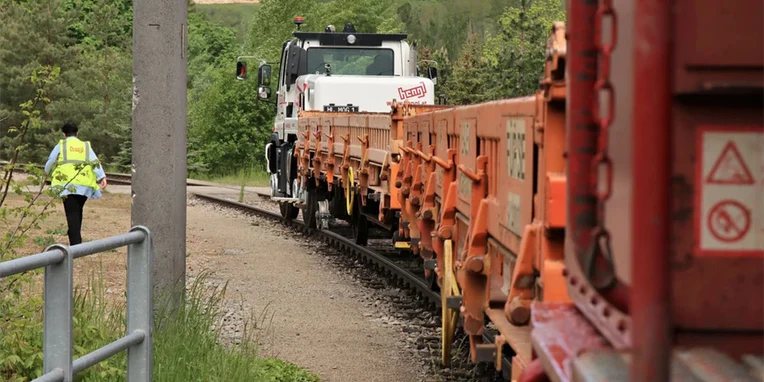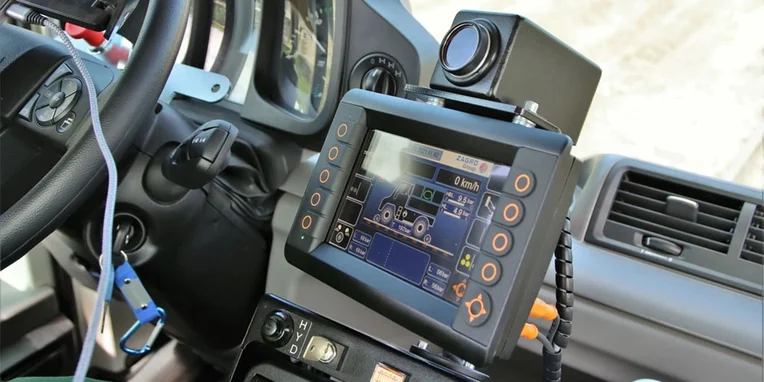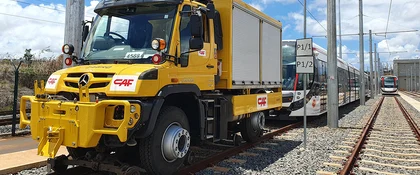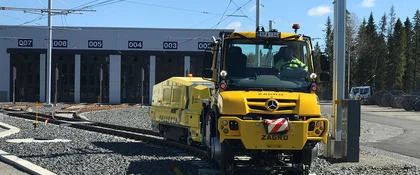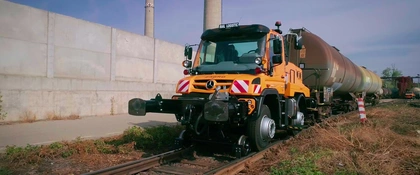The Austrian rail ballast producer Hengl relies on the Unimog U 423 road-rail vehicle.
Hengl Mineral GmbH is a family-run company based in Limberg, which can look back over a century-long association with Austrian railways: as far back as 1918, the Hengls ran the quarrying and stone-crushing operations for the expansion of the Imperial railway line between Vienna and Prague. The Limberg rail ballast is still being used in rail-bound infrastructure projects throughout Austria today.
The company enjoys another more recent, but nevertheless unwavering, tradition that goes back 20 years now: all shunting operations in the sidings of the Franz Josef Railway are carried out using Unimog road-rail vehicles. The latest special-purpose truck, a Unimog U 423 with road-rail system, was supplied last summer in collaboration with Unimog partner Pappas, and since then it has been precision mounted on the tracks every day to transport thousands of tonnes of aggregate around the railway network.
Extensive range of specialist equipment.
The experience of Mercedes-Benz and the ZAGRO Group which carried out the road-rail conversion is evident in every detail of this Unimog. The modern camera equipment ensures safety as well as precision and a glance at the official equipment list reveals just how much technology has gone into this special-purpose vehicle: the list covers eight pages.
